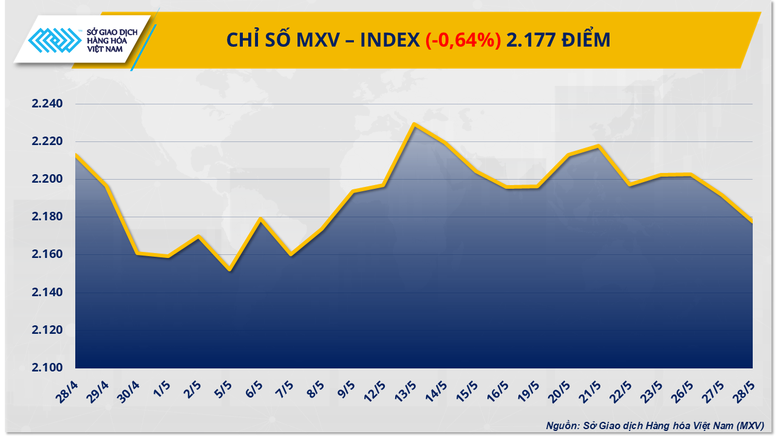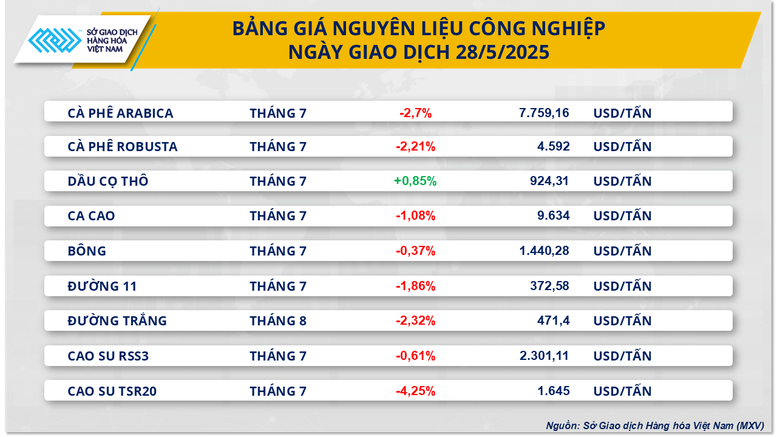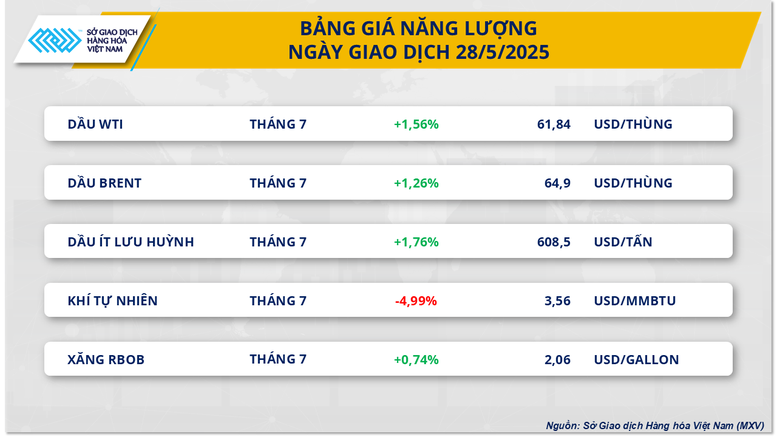World sugar prices fell for four consecutive sessions
At the end of yesterday's session, the industrial raw material market was deep in red when 8/9 items simultaneously decreased in price. Of which, the price of 11 sugar contracts for July decreased by 1.86% to 372.58 USD/ton, marking the 4th consecutive session of weakness and also the lowest level in nearly 4 months. In addition, the price of white sugar for August contract also recorded a decrease of 2.32% to 471.4 USD/ton - the lowest level since January this year.
According to MXV, the supply-demand surplus continues to be the main cause of pressure on world sugar prices in the recent past. A report by the US Department of Agriculture (USDA) on May 22 said that global sugar output in the 2025-2026 crop year is expected to reach 189.3 million tons, up 4.73% over the previous crop year. Meanwhile, global sweetener consumption is forecast to reach only 177.9 million tons, up 1.4% over the same period in the 2024-2025 crop year, leading to a surplus of nearly 11.4 million tons - double the surplus of the previous crop year.
In addition, according to government data, the sharp decline in sugar imports from major consuming countries in the world in the first quarter clearly reflected the decline in sugar consumption, thereby directly affecting the price of this commodity. Specifically, the total import volume of cane sugar, beet sugar and pure sucrose in solid form of the US and EU in the first quarter reached only over 900,000 tons, a sharp decrease of 28% compared to the same period last year. In particular, the European market recorded a decrease in sugar imports of up to more than 50%, while the figure in the US was 19%. In addition, other markets such as Indonesia, Malaysia and South Korea also witnessed a downward import trend in the first quarter of the year.
On the production front, favorable weather conditions continue to support the Indian sugar industry. The government has forecast that this year’s monsoon rainfall will be 106% of the long-term average, marking the second consecutive year of above-average rainfall. According to the India Meteorological Department (IMD), normal rainfall is defined as 96% to 104% of the average 35 inches during the June-September monsoon season.
OPEC+ focuses on setting up 2027 production mechanism, Venezuela and Canada supply under pressure
According to MXV, the energy market recorded a strong recovery in buying power in yesterday's trading session. In particular, Brent oil price stopped at 64.9 USD/barrel, corresponding to an increase of 1.26%. At the same time, WTI oil price also increased by 1.56%, to 61.84 USD/barrel. This increase occurred despite forecasts of the possibility of OPEC+ continuing to increase production next month, mainly due to concerns about supply disruptions in Venezuela and Canada.
In yesterday's session, the Organization of the Petroleum Exporting Countries and its partners (OPEC+) held a meeting focusing on establishing a baseline oil production mechanism for 2027 instead of discussing the July production level. Another meeting between the eight key OPEC+ member countries is expected to take place on May 31, and it is likely that the decision on OPEC+'s July production level will be made at this meeting.
At the same time, the market faces the risk of supply disruptions from Venezuela and Canada. The Trump administration has issued a limited authorization that allows Chevron Energy to hold assets in Venezuela, including a stake in an oil joint venture with Venezuela’s state-owned oil company (PDVSA). However, under the new authorization, Chevron cannot operate oil fields in Venezuela, export oil or expand operations.
There were earlier concerns about supplies from Canada as a wildfire in the Canadian province of Alberta forced some oil and gas production to temporarily shut down. The fire, which burned about 1,600 hectares (4,000 acres) out of control, was 100 kilometres (4,500 miles) north of the town of Swan Hills in the province.
In addition, the American Petroleum Institute (API) also announced its estimate of US crude oil reserves. Accordingly, contrary to most market predictions of an increase, the work week ending on May 23 recorded a decrease of up to 4.24 million barrels, reversing the increase of about 2.5 million barrels in the previous week. Today, the US Energy Information Administration (EIA) will also announce data on this issue.
Source: https://baolangson.vn/mxv-index-ve-muc-thap-nhat-trong-hon-ba-tuan-5048547.html






![[Photo] Prime Minister Pham Minh Chinh attends the event "Digital transformation of the banking industry by 2025"](https://vphoto.vietnam.vn/thumb/1200x675/vietnam/resource/IMAGE/2025/5/29/0e34cc7261d74e26b7f87cadff763eae)


























![[Photo] Prime Minister Pham Minh Chinh receives leaders of Excelerate Energy Group](https://vphoto.vietnam.vn/thumb/1200x675/vietnam/resource/IMAGE/2025/5/29/c1fbe073230443d0a5aae0bc264d07fe)




























































Comment (0)